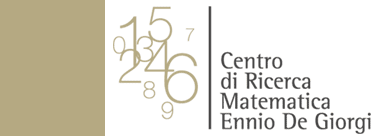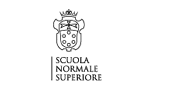Periods and quasiperiods of modular forms and D-brane masses on the quintic
speaker: Albrecht Klemm ( Hausdorff Center for Mathematics - HCM)abstract: We consider one complex structure parameter mirror families $W$ of Calabi-Yau 3-folds with Picard-Fuchs equations of hypergeometric type. By mirror symmetry the even D-brane masses of the orginal Calabi-Yau $M$ can be identified with four periods w.r.t. to an integral symplectic basis of $H3(W,Z)$ at the point of maximal unipotent monodromy. It was discovered by Chad Schoen in 1986 that the singular fibre of the quintic at the conifold point gives rise to a Hecke eigen form of weight four $f4$ on $\Gamma0(25)$ whose Fourier coefficients $ap$ are determined by counting solutions in that fibre over the finite field $\mathbb{F}{pk}$. The D-brane masses at the conifold are given by the transition matrix $T{mc}$ between the integral symplectic basis and a Frobenius basis at the conifold. We predict and verify to very high precision that the entries of $T{mc}$ relevant for the D2 and D4 brane masses are given by the two periods (or L-values) of $f4$. These values also determine the behaviour of the Weil-Petersson metric and its curvature at the conifold. Moreover we describe a notion of quasi periods and find that the two quasi period of $f4$ appear in $T{mc}$. We extend the analysis to the other hypergeometric one parameter 3-folds and comment on simpler applications to local Calabi-Yau 3-folds and polarized K3 surfaces.
timetable:
Fri 15 Jun, 11:30 - 12:30, Aula Dini
<< Go back

